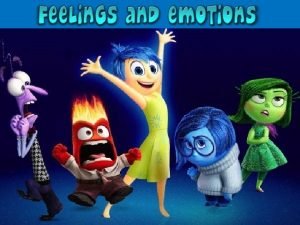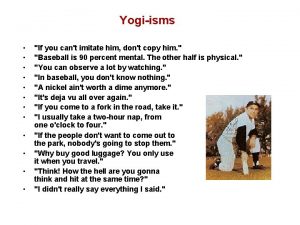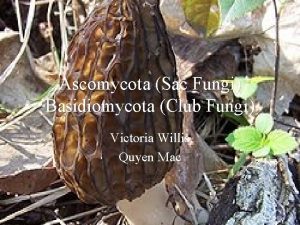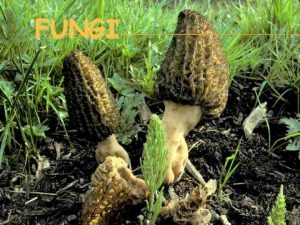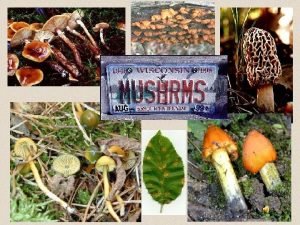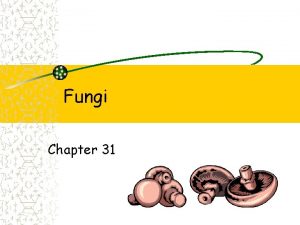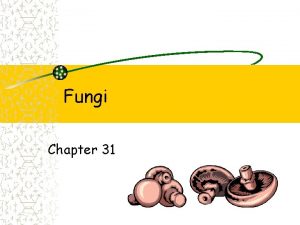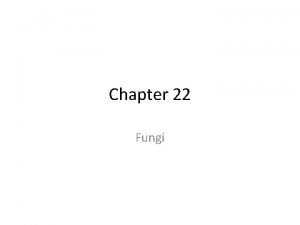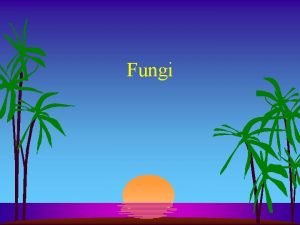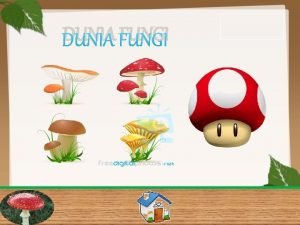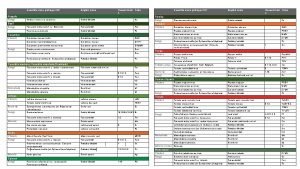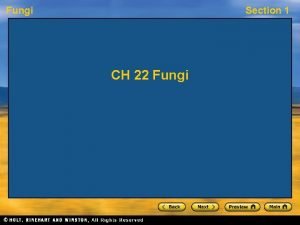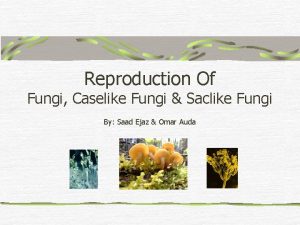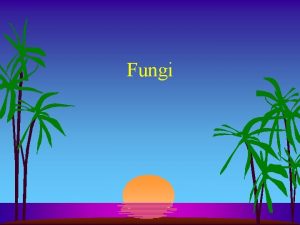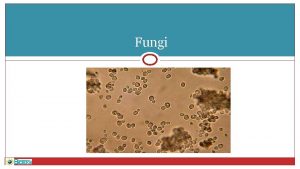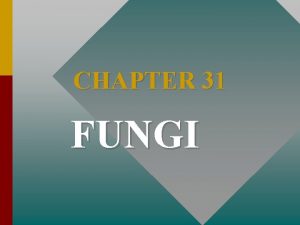Dont worry Youll Like Him hes a FUNGI




























- Slides: 28

Don’t worry, You’ll Like Him, he’s a FUNGI! Kingdom Fungi differs in form, size and color u Most grow best in moist, warm environments between 20 -30°C u Most are multicellular (except yeasts) u Major Ecological Roles: 1. Heterotrophic, Decomposers that recycle nutrients in the ecosystem. 2. Symbionts: with plants to help with nutrient absorption, with algae to form lichen, with herbivore insects. 3. Or Parasitic &/or pathogenic. 4. Some can be beneficial u http: //www. nature grid. org. uk/biodive rsity/crypfungi. htm l

Structure of a Fungi Body type: Multicellular u Cell Structure: Cells have cell walls of chitin u Hyphae – threadlike filaments which develop from fungal spores u Hyphae elongate at their tips and branch extensively to form a network of filaments underground called a mycelium. u Mycelium – (many types) some anchor the fungus, others invade the food source, or function as a reproductive structure u

Basic Mushroom Structure


Plants versus Fungi Like plants, many grow anchored in the soil and have cell walls. u Unlike plants, which have cell walls made of cellulose, fungi use a complex carbohydrate called chitin. u Chitin gives the fungal cell walls both strength and flexibility. u Unlike plants, they cannot make their own energy and must absorb it from the surroundings. u


Fungal Reproduction u u One important criterion for classifying fungi into divisions is their patterns of reproduction Fragmentation – pieces of hyphae broken off a mycelium grow into new mycelia. Unicellular fungi (yeast) reproduce by asexual budding. Most fungi produce spores: specialized mycelium called sporangium. – Protects the spores before being released and keeps them moist

Typical Fungus Reproduction Club-shaped cells that exist in the GILLS of mushroom go through a cycle that produces nuclear fusion spores. The spores, which are like gametes, fuse with other spores to spread the fungus around. meiosis SPORE cap stalk F Spores are released, germinate, and give rise mycelium. gill hyphae of mycelium A cytoplasmic fusion B Spore-bearing mushrooms form from this mycelium. sexual spore forms at gill margin Stepped Art Fig. 24 -12, p. 396

http: //www. yout ube. com/watch? v=i. PO 4 Rry 4 m 4 U &feature=relate d u u Advantage of Spores Protection from dehydration and damage (sporangium) Small & lightweight, can be dispersed by wind, water, animals – Wind can disperse a spore 100 s of miles/kilometers. Produce a large number of spores at one time – A puffball 23 cm in circumference produces about 1 Trillion spores! – Greater survival in numbers Fungi can produce 2 types of spores: – Mitosis (asexual phase) – Meiosis (sexual phase)

Fungal Feeding u There are 3 ways heterotrophic Fungi feed: – Saprophytes are decomposers and feed on waste or dead organic material. – Mutualists live in a symbiotic relationship with another organism like an alga. – Parasites absorb nutrients from the living cells of their hosts u Specialized hyphae called haustoria

Fungi Classification Major Groups of Fungi Take notes on these.

Common Molds Zygomycota u Called “Pin molds” or “sugar molds” u Attack breads & fruits u 900 species u Root-like hyphae called rhizoids penetrate the bread’s surface, stem-like hyphae called stolons run along the bread surface u

Sac Fungi Ascomycotes – have ascus, reproductive structure that contains spores u 30, 000 species u Includes: cup fungi, yeast, morels, truffles u

Club Fungi u u Basidomycotes: “Club fungi” have clubshaped hyphae (basidia) which produce basidospores 25, 000 species Include: puffballs, shelf fungus, mushrooms Puffballs emitting spores You should take care in eating wild mushrooms, many are poisonous!

Imperfect Fungi u u Deuteromycotes: reproduce asexually 25, 000 species Species are varied, can not be assigned to other phyla Includes penicillin, blue cheese veins

Fungi and Humans u Fungi 1. 2. 3. can fall into 3 categories. Beneficial – serve some purpose that we can use to our benefit. Benign – exist as decomposers, productive members of ecosystems. Detrimental – disease to us, animals, or plants.

Beneficial Fungi u Highlights. 1. 2. 3. Food Medicine – Antibiotics like penicillin – Statins: lowers lipids in the blood to reduce chances of heart attacks and strokes Promote plant growth – Lichin – Mycorrhizae: Hyphae of mycorrhizae grow through soil and increase the absorptive area of their partner. – Partner plant provides sugars to fungus.

Fungi Foods

Fig. 31 -26 Some fungus produce checmials that we use to inhibit bacterial growth. Staphylococcus Penicillium Zone of bacteria’s inhibited growth

A unique fungi: Lichen u u Lichen – a symbiotic association between a fungus & a green alga. Lichen are important as, together, they are the pioneer species that establish ecosystems. Only need light, air, minerals to grow Awesome case of Mutualism… – The photosynthetic alga provides the food for the organism – The fungus provides the alga with water, minerals and protects it from the environment.

How do lichen cells get to islands in the center of the ocean? FYI. Lichen cells break off the original body in microscopic dispersal fragments and can be carried long distances. dispersal fragment (cells of fungus and of photosynthetic species). This is how it spreads through the wind. outer layer of fungal cells photosynthetic species (the little circles) inner layer of loosely woven hyphae outer layer of fungal cells Fig. 24 -14 d, p. 398

Benefits of Mycorrhizae u Juniper seedlings without and with mycorrhizae

Fungal Human Diseases Disease u Ringworm u Valley fever u Athlete’s foot u Yeast infection u Caused by u Fungal parasite u Coccidioides u Fungal parasite u Candida u Fungal diseases are parasitic: They consume the cells of their hosts. u I won’t show you pictures. ew u

Disease (d) Green mold on grapefruit (a) Corn smut on corn (b) Tar spot fungus on maple leaves (c) Ergots on rye • These fungal growths damage plants and crops and destroy food supplies. • Fungi & molds are the biggest obstacle to long term storage of dry grain.

Yeast Respiration Experiment In this experiment, you will observe cellular respiration in yeast. In each of the four test tubes is Bromothymol Blue (turns yellow when it detects cell respiration) kept at 40 degrees Celsius. Test Tube 1 2 3 4 – – Yeast and Sugar Yeast, No Sugar Only No Sugar, No Yeast

Pre-lab Predictions 1. What is the product of cellular respiration that we are trying to detect? 2. What type of respiration occurs in yeast? (Hint: no Oxygen needed!) 3. Name one of the two constants in this experiment. 4. Which test tube # is the control? u Generate now! your hypothesis in your notes

Observe and Reflect u http: //www. youtube. com/watch? v= KTOrp. Hsbs. ZQ u u u Was your hypothesis supported or rejected? – Why or why not? What 3 -letter energy carrier is made through this process for the yeast? How do you think you could get the yeast to undergo more cell respiration?

Answers u 1. Carbon Dioxide Gas u 2. Anaerobic Respiration (Alcoholic Fermentation!) u 3. Bromothymol Blue or Temperature (40°C) u 4. Test Tube #4 is the control u Energy Carrier: ATP (2) u Add more food! – (aka Sugar to the yeast)
 Dont worry be happy notes
Dont worry be happy notes Dont worry be ready
Dont worry be ready Hast thou heard him seen him known him
Hast thou heard him seen him known him Dont laugh at me dont call me names
Dont laugh at me dont call me names Dont ask dont tell political cartoon
Dont ask dont tell political cartoon I love you pablo neruda
I love you pablo neruda George best
George best Hes g
Hes g Alma 7:11-13
Alma 7:11-13 This is the very painting of your fear
This is the very painting of your fear Hes teaching facility csu
Hes teaching facility csu Flwtravel/tours
Flwtravel/tours Macbeth analysis act 1 scene 2
Macbeth analysis act 1 scene 2 Windhorse
Windhorse Is he hungry
Is he hungry Hes dying
Hes dying Palabras con has hes his hos hus
Palabras con has hes his hos hus We seek him here we seek him there
We seek him here we seek him there He who has ears, let him hear he who has eyes let him see
He who has ears, let him hear he who has eyes let him see Praise him praise him jesus our blessed redeemer lyrics
Praise him praise him jesus our blessed redeemer lyrics Othello annotations act 1 scene 1
Othello annotations act 1 scene 1 If you can't imitate him don't copy him
If you can't imitate him don't copy him Praise him praise him jesus our blessed redeemer
Praise him praise him jesus our blessed redeemer Sing to him sing praise to him
Sing to him sing praise to him Club fungi are named for
Club fungi are named for Club fungi are morels truffles bracket fungi yeast
Club fungi are morels truffles bracket fungi yeast Club fungi are morels truffles bracket fungi yeast
Club fungi are morels truffles bracket fungi yeast Explore more worry less
Explore more worry less Baby fever chart
Baby fever chart




